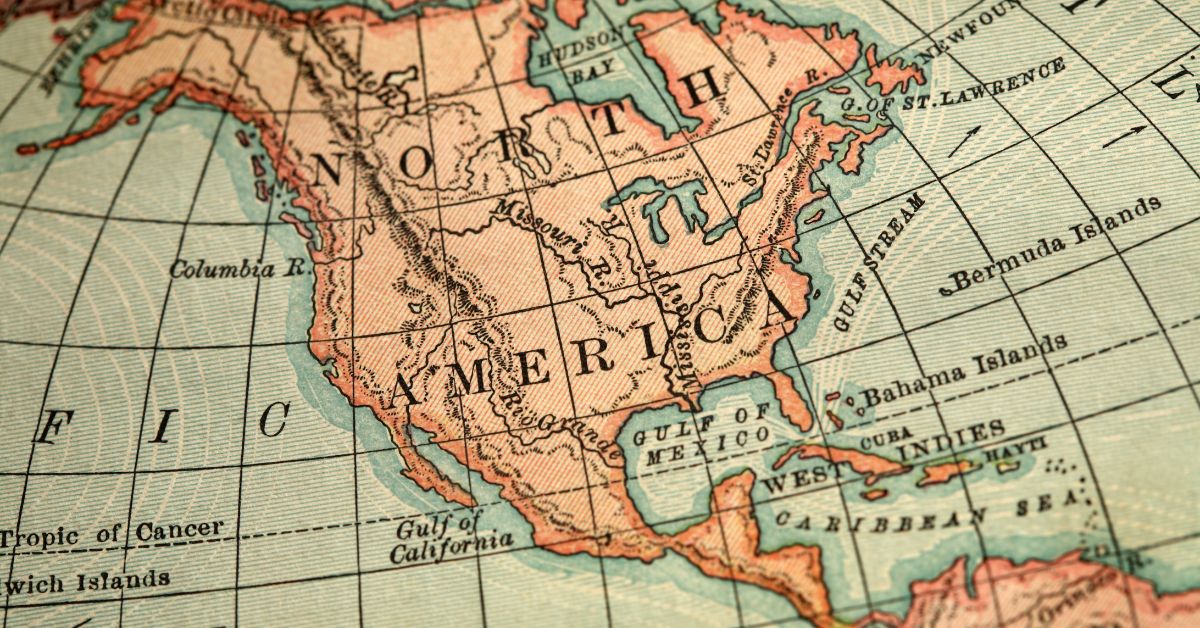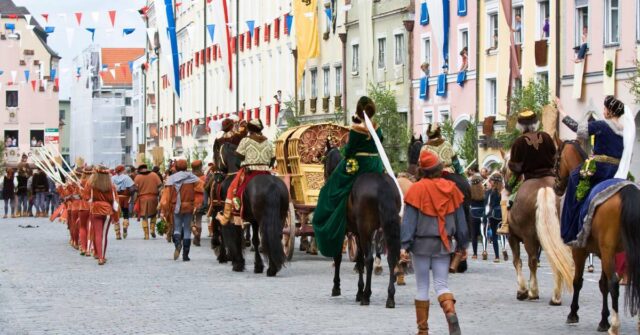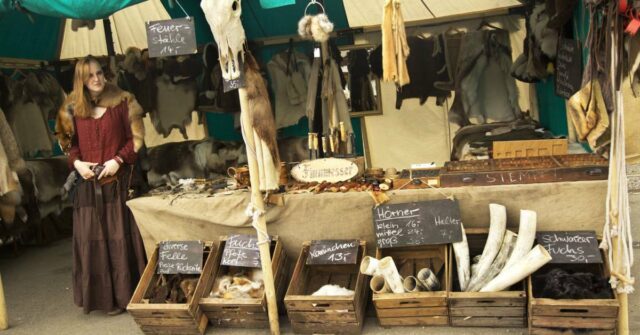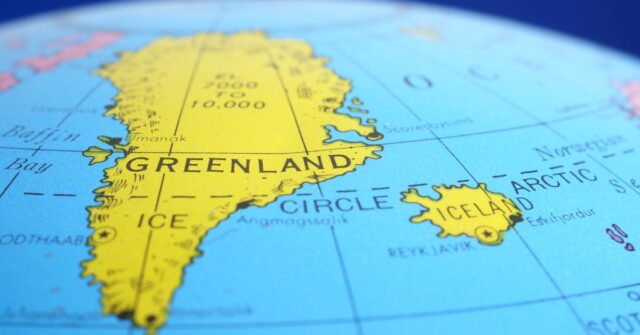The Viking Age, a period of history ranging from the late eighth to early eleventh century, is a time of great exploration and expansion for the Norse people.
Among their many voyages, the expeditions to North America stand out as particularly fascinating, shrouded in mystery and legend.
This blog post aims to unravel the story of these expeditions, providing a detailed and comprehensive overview for anyone interested in this captivating chapter of history.
Introduction
The Vikings, seafaring warriors, and traders from Scandinavia have left an indelible mark on history, not least through their expeditions across the Atlantic to North America.
These voyages, occurring long before Columbus set sail, are a testament to the Vikings’ remarkable navigational skills and adventurous spirit.
In this introduction, we will delve into the allure of the Viking Age, provide an overview of Viking exploration, and discuss the significance of their expeditions to North America.
The Allure of the Viking Age
The Viking Age is often romanticized and shrouded in myth, with images of fearsome warriors and formidable ships dominating popular culture. However, the era was also a time of innovation, trade, and exploration.
The Vikings’ advanced shipbuilding techniques and navigational skills enabled them to travel vast distances, establishing trade routes and settlements along the way.
The allure of the Viking Age lies not only in its tales of conquest and adventure but also in its impact on the course of history and the connections forged between distant lands.
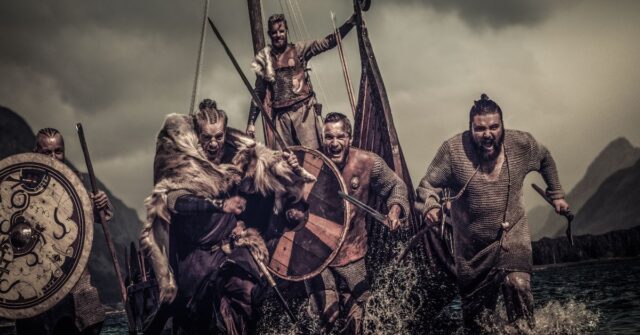

Overview of Viking Exploration
The Vikings embarked on a wide range of expeditions, from trading voyages in the Baltic and Mediterranean to raids on the British Isles and France. Their journeys took them as far east as Russia and as far south as North Africa.
However, it is their expeditions to the west, towards the uncharted territories of the North Atlantic, that capture the imagination.
These voyages led to the discovery and settlement of Iceland, Greenland, and, eventually, parts of North America.
Significance of Viking Expeditions to North America
The Viking expeditions to North America hold a special place in history, representing one of the earliest known European contacts with the New World.
These voyages challenge the traditional narrative of European exploration and highlight the remarkable achievements of the Vikings.
The settlements established, albeit briefly, in North America are a testament to the Vikings’ adventurous spirit and their ability to navigate and survive in harsh, unfamiliar environments.
The Vikings: A Brief Background
To fully appreciate the significance of the Viking expeditions to North America, it is essential to understand who the Vikings were, their culture, and their way of life.
In this section, we will explore the origins and culture of the Vikings, their social structure and daily life, their shipbuilding and navigational prowess, as well as their religious beliefs and mythology.
Origin and Culture
The Vikings originated from Scandinavia, specifically the modern-day countries of Norway, Sweden, and Denmark. They were not a single unified group, but rather a collection of tribes and clans, each with their own customs and traditions.
Viking culture was deeply influenced by the harsh Nordic environment, resulting in a society that valued strength, resilience, and resourcefulness.
The Vikings were also known for their art and craftsmanship, producing intricate jewelry, weapons, and carvings.
Social Structure and Daily Life
Viking society was hierarchical, with a clear division between the various social classes. At the top were the jarls (nobles), followed by the karls (free farmers and warriors), and finally the thralls (slaves).
Daily life for the Vikings depended on their social status and occupation, but for most, it involved farming, trading, and, of course, seafaring.
The Vikings were also known for their love of feasting and storytelling, which played a significant role in their social life.
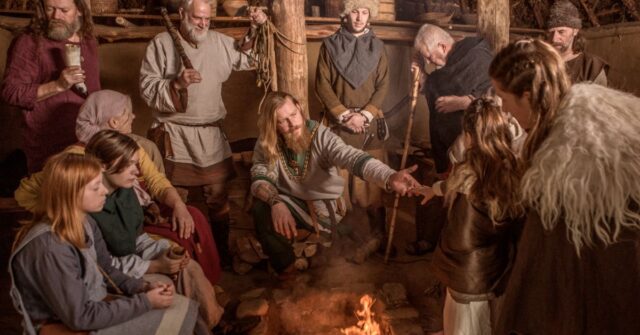

Navigation and Shipbuilding
The Vikings were master navigators and shipbuilders, with their longships being a hallmark of their era. These ships were fast, flexible, and capable of navigating both open seas and shallow rivers.
The Vikings used a combination of celestial navigation, knowledge of currents and tides, and landmarks to find their way across uncharted waters.
Their navigational skills were crucial to their success as explorers and traders.
Religion and Mythology
The Vikings followed a polytheistic religion, worshipping a pantheon of gods and goddesses from Norse mythology. Their beliefs played a significant role in their daily life and were reflected in their art, literature, and social practices.
The Vikings believed in a world filled with magic and mythical creatures, and these beliefs, combined with their love of storytelling, have contributed to the rich tapestry of Viking mythology that continues to captivate people today.
Early Signs and Sagas
The story of the Viking expeditions to North America is intertwined with the sagas, epic tales of heroes, gods, and adventures.
These sagas passed down through generations, provide valuable insights into the Vikings’ journeys and their interactions with the lands they encountered.
In this section, we will explore the Icelandic sagas, the settlement of Greenland, and the challenges of separating fact from fiction in these ancient texts.
The Icelandic Sagas
The Icelandic sagas are a collection of epic narratives, written in the Old Norse language, that recount the stories of the Vikings, their adventures, and their settlements.
The sagas that specifically relate to the expeditions to North America are the Saga of the Greenlanders and the Saga of Erik the Red.
These sagas provide detailed accounts of the voyages, the challenges encountered, and the interactions with the indigenous peoples of North America.
Greenland’s Settlement
The settlement of Greenland plays a pivotal role in the story of the Viking expeditions to North America.
Led by Erik the Red, the Vikings established settlements in Greenland in the late 10th century, which served as a stepping stone for further exploration of the West.
The settlements in Greenland lasted for several centuries, providing a base for the Vikings’ adventurous voyages to North America.
Myths vs. Facts: Understanding the Sagas
While the sagas provide a rich narrative of the Viking expeditions, they also pose challenges for historians and archaeologists.
Written centuries after the events they describe, the sagas blend history with legend, making it difficult to separate fact from fiction.
Despite these challenges, the sagas remain a valuable source of information, providing insights into the Vikings’ journeys and their encounters with the New World.
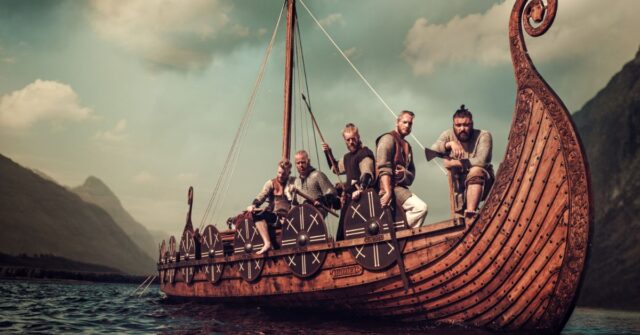

The Main Expeditions
The Viking expeditions to North America were a series of voyages that took place over several decades. These expeditions were led by various figures, each playing a crucial role in the story of the Vikings in the New World.
In this section, we will delve into the expeditions led by Leif Erikson, Thorfinn Karlsefni, and other notable figures, exploring their journeys, achievements, and the challenges they faced.
Leif Erikson and the Discovery of Vinland
Leif Erikson, the son of Erik the Red, is often credited with leading the first European expedition to North America, around the year 1000 CE.
According to the sagas, Erikson and his crew explored a land they called “Vinland,” believed to be located on the northern tip of Newfoundland.
The expedition established a settlement, though it was short-lived. Despite the brevity of their stay, Erikson’s journey to Vinland is a significant milestone in the history of European exploration.
Thorfinn Karlsefni’s Attempted Settlement
Following in Erikson’s footsteps, Thorfinn Karlsefni led another expedition to Vinland in the early 11th century. Karlsefni and his crew attempted to establish a permanent settlement, interacting with the indigenous peoples and engaging in trade.
However, conflicts with the local inhabitants ultimately led to the expedition’s withdrawal.
Karlsefni’s journey, while not resulting in a lasting settlement, provides valuable insights into the challenges faced by the Vikings in the New World.
Other Notable Expeditions and Figures
In addition to Erikson and Karlsefni, there were other Viking expeditions to North America, led by figures such as Thorvald Eriksson and Freydis Eiriksdottir.
These voyages contributed to the Vikings’ knowledge of the North Atlantic and the lands to the west, playing a crucial role in the story of their expeditions to North America.
The collective achievements and challenges of these expeditions paint a picture of a daring and resilient people, determined to explore and thrive in uncharted territories.
Archaeological Evidence
The sagas provide a narrative of the Viking expeditions to North America, but it is through archaeology that we find tangible evidence of their presence.
In this section, we will explore the archaeological site of L’Anse aux Meadows, the artifacts and structures uncovered, and the significance of the butternut connection.
We will also discuss the challenges faced by archaeologists in studying the Viking presence in North America.
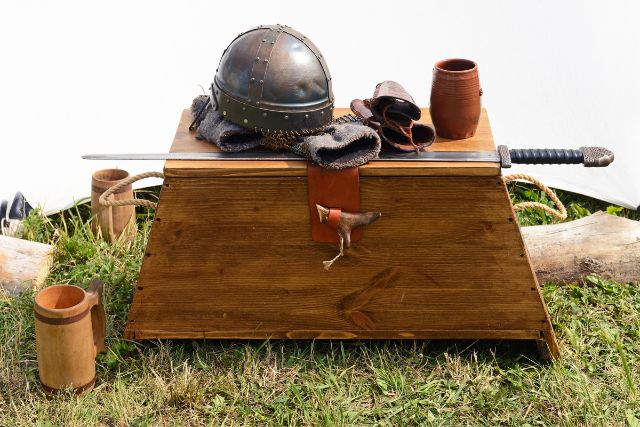

L’Anse aux Meadows: A Norse Settlement in Newfoundland
L’Anse aux Meadows, located on the northern tip of Newfoundland, Canada, is the only confirmed Norse settlement in North America.
Discovered in the 1960s by archaeologists Helge and Anne Stine Ingstad, the site consists of several Norse-style buildings and artifacts dating back to around 1000 CE.
L’Anse aux Meadows is believed to be the Vinland mentioned in the sagas, providing a physical connection to the Viking expeditions and serving as a UNESCO World Heritage Site.
Artifacts and Structures
The artifacts and structures found at L’Anse aux Meadows provide valuable insights into the Vikings’ way of life and their activities in North America.
The site includes the remains of eight buildings, believed to be living quarters, workshops, and storage areas. Artifacts such as iron nails, a stone oil lamp, and a spindle whorl suggest activities such as ship repair, ironworking, and textile production.
These finds paint a picture of a self-sufficient community, capable of adapting to the challenges of the New World.
The Butternut Connection
One of the most intriguing finds at L’Anse aux Meadows is the presence of butternut shells, a tree species native to regions south of Newfoundland.
This discovery suggests that the Vikings explored regions beyond L’Anse aux Meadows, possibly venturing as far south as the Gulf of St. Lawrence.
The butternut connection adds another layer of complexity to the story of the Viking expeditions, hinting at a broader range of exploration and interaction with the lands of North America.
Challenges in Archaeology
Studying the Viking presence in North America is fraught with challenges. The passage of time, the decay of organic materials, and the limited number of Norse-style artifacts make it difficult to uncover and interpret the Vikings’ activities.
Despite these challenges, ongoing archaeological research continues to shed light on the Viking expeditions, providing a richer understanding of their impact on the history of North America.
Interaction with Indigenous Peoples
The Viking expeditions to North America did not occur in isolation; they involved interactions with the indigenous peoples of the region.
In this section, we will explore accounts from the sagas, archaeological insights, and the impact of these interactions on the indigenous communities.
Accounts from the Sagas
The sagas provide vivid descriptions of the Vikings’ interactions with the indigenous peoples, referred to as the “Skrælings.” These accounts depict a range of encounters, from trade and exchange to conflict and violence.
While the sagas offer a valuable perspective, it is important to approach these accounts with caution, as they are written from the Vikings’ point of view and may reflect biases and misconceptions.
Archaeological Insights
Archaeology provides an additional layer of understanding of the interactions between the Vikings and indigenous peoples.
Artifacts such as indigenous pottery found at Norse sites suggest trade and exchange, while the absence of significant conflict-related artifacts indicates that violent encounters if they occurred, were not widespread.
These findings provide a more nuanced view of the interactions, highlighting the complexity of these cross-cultural encounters.


The Impact on Indigenous Communities
The impact of the Viking expeditions on the indigenous communities of North America is a subject of ongoing research and debate.
While the Vikings’ presence was relatively brief and limited in scope, it represents an early example of European contact with the New World, setting the stage for future interactions and exchanges.
Understanding the impact on indigenous communities requires a careful consideration of both the archaeological evidence and the historical context.
The End of Viking Presence in North America
The Viking expeditions to North America were a remarkable chapter in the history of exploration, but they were not to last.
In this section, we will explore the challenges and conflicts that led to the end of Viking presence in North America, the withdrawal from Greenland, and the legacy of these expeditions in historical reinterpretation.
Challenges and Conflicts
The Vikings faced numerous challenges in North America, from harsh weather conditions to conflicts with the indigenous peoples.
These challenges, combined with the vast distance from their established settlements in Greenland and Iceland, ultimately led to the abandonment of their North American ventures.
The exact reasons for the withdrawal remain a subject of debate among historians and archaeologists.
The Withdrawal from Greenland
The Viking settlements in Greenland, which had served as a base for the expeditions to North America, also came to an end in the 15th century.
The reasons for the abandonment of Greenland are complex, involving a combination of climate change, economic factors, and social changes.
The end of the Viking presence in Greenland marks the close of the Norse expeditions to the New World.
Legacy and Historical Reinterpretation
The way we understand the Viking expeditions to North America has evolved significantly over time, thanks to advances in historical and archaeological research.
Once taken at face value, the sagas are now seen as intricate narratives blending fact, mythology, and storytelling.
The archaeological record, too, has become a key asset in piecing together the Vikings’ true story in the New World, providing a balance to the literary sources.
This progress in historical reinterpretation has led to a more nuanced and comprehensive understanding of the Viking expeditions, their achievements in exploration, and their interactions with indigenous peoples.
Vikings in Popular Culture
The Vikings have long captured the public imagination, with their daring expeditions and warrior ethos becoming the stuff of legend.
In this section, we will explore the portrayal of the Vikings in popular culture, examining how modern myths and misconceptions have shaped our understanding of these medieval seafarers.
We will also delve into the representation of the Vikings in literature and film, and take a look at how reenactments and festivals continue to celebrate Viking culture today.


Modern Myths and Misconceptions
Despite the wealth of scholarly research on the Vikings, modern myths and misconceptions about these medieval seafarers persist.
These myths often depict the Vikings as bloodthirsty raiders, neglecting the complexity of their society and their accomplishments as explorers, traders, and settlers.
Efforts to debunk these misconceptions are ongoing, with historians and archaeologists working to provide a more accurate and nuanced view of Viking life and culture.
The Vikings in Literature and Film
The Vikings have long been a popular subject in literature and film, with countless works depicting their voyages, battles, and way of life. These representations, while often entertaining, vary widely in their accuracy and portrayal of Viking culture.
Some works aim to provide a faithful depiction of the Vikings and their world, drawing on historical and archaeological sources, while others take creative liberties, prioritizing drama and spectacle over accuracy.
Reenactments and Festivals
Reenactments and festivals provide a unique opportunity to bring Viking history and culture to life, offering a tangible connection to the past.
These events often feature demonstrations of Viking crafts, combat, and daily life, allowing participants and spectators alike to gain a deeper appreciation for the Viking way of life.
While the authenticity of these reenactments can vary, they play a crucial role in fostering interest in Viking history and promoting a greater understanding of these medieval seafarers.
Conclusion
As we conclude our exploration of the Viking expeditions to North America, it is clear that these journeys represent a fascinating and complex chapter in the history of exploration.
From the sagas and archaeological evidence to the Vikings’ enduring legacy in popular culture, the story of these medieval voyages continues to captivate and inspire.
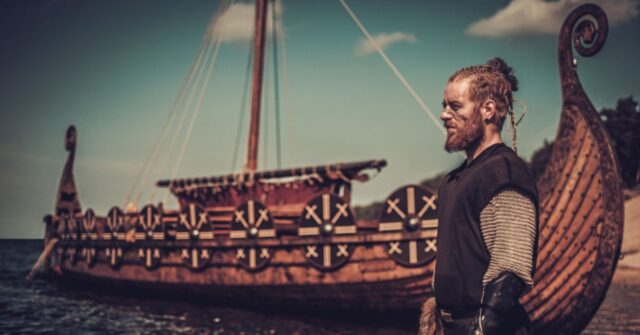

Summarizing the Viking Expeditions
The Viking expeditions to North America were characterized by daring navigation, interactions with indigenous peoples, and the establishment of settlements in the New World.
While their presence in North America was ultimately short-lived, the Vikings’ journeys left an indelible mark on the history of exploration, challenging previous notions of the medieval world and expanding the boundaries of the known.
The Lasting Legacy of Viking Exploration
The legacy of the Viking expeditions extends far beyond the sagas and archaeological sites; it is embedded in our cultural consciousness, shaping our perceptions of exploration, adventure, and the medieval world.
The Vikings’ spirit of exploration continues to inspire, serving as a reminder of the boundless curiosity and resilience that define the human spirit.

